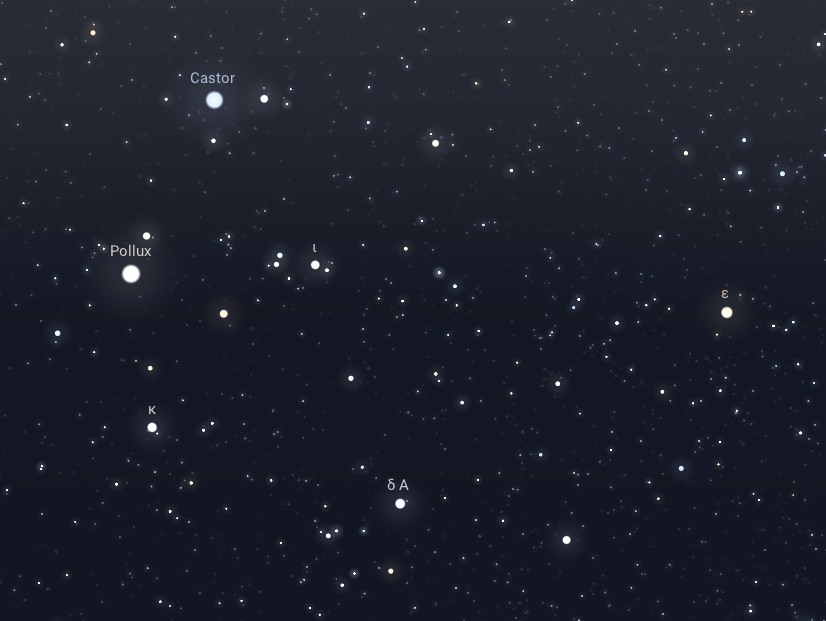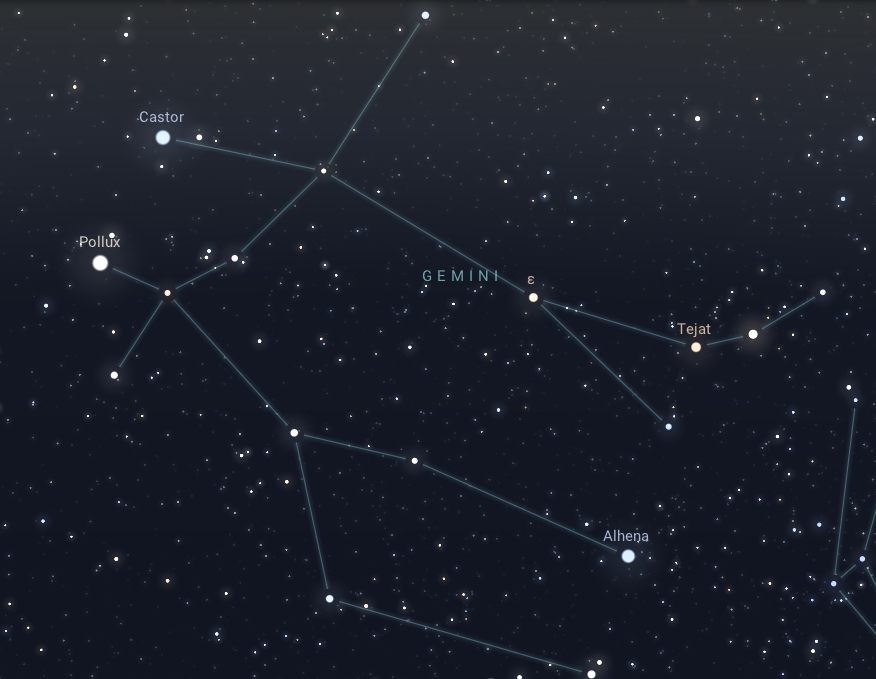Gemini is a prominent constellation in the northern celestial hemisphere, representing the twins Castor and Pollux from Greek mythology. Here are some key features of the Gemini constellation:
Shape
Gemini is often depicted as two stick figures or human-like figures representing the twins. Castor and Pollux are the two brightest stars in the constellation, and they are often referred to as the “Heads of the Twins.” Pollux is the brighter of the two and is a red giant star, while Castor is a multiple star system consisting of six individual stars. They are connected by a line of fainter stars, which represents their bodies.
Location
Gemini is located along the ecliptic, which is the apparent path of the Sun across the sky. As a result, it is one of the zodiac constellations and is associated with the Sun’s yearly journey through the sky, known as the ecliptic.
Deep-Sky Objects
The constellation contains several notable deep-sky objects, including the open clusters Messier 35 and Messier 37, as well as the Eskimo Nebula (NGC 2392), a planetary nebula located near the star Propus (Eta Geminorum). It also includes a supernova remnant, IC 443 – The Jellyfish Nebula, also located in the eastern part of the constellation, near the bright star Eta Geminorum.
Mythology
In Greek mythology, Castor and Pollux were twin brothers, the sons of Zeus (Jupiter) and Leda. They were known for their bravery and were often depicted as protectors of sailors. When Castor was killed in battle, Pollux asked Zeus to allow them to be together forever, and Zeus transformed them into the constellation Gemini.
Visibility
Gemini is best seen during the winter and spring months in the Northern Hemisphere, when it is high in the sky, typically from December to May. During these months, Gemini is well-placed for observation in the evening sky, particularly in the late evening and early morning hours.
It can be found in the eastern sky in the early evening and moves westward across the sky throughout the night. The two bright stars of Castor and Pollux, are among the brightest in the night sky and serve as useful reference points for locating the constellation.
While Gemini is most easily observed during the winter and spring months, it can still be seen in the months before and after this period, though its visibility may be reduced as it moves closer to the western horizon.

Star Magnitudes
Here are the magnitudes of some notable stars in the Gemini constellation:
Pollux (Beta Geminorum) – Magnitude: 1.14
Castor (Alpha Geminorum) – Magnitude: 1.58
Alhena (Gamma Geminorum) – Magnitude: 1.92
Tejat Posterior (Mu Geminorum) – Magnitude: 2.87
Wasat (Delta Geminorum) – Magnitude: 3.53



